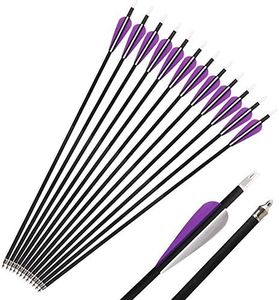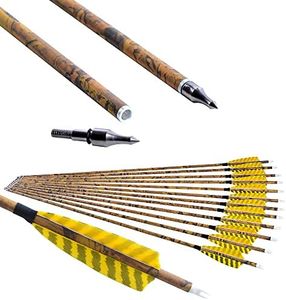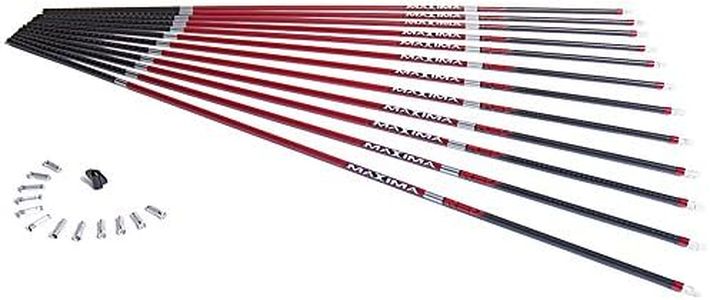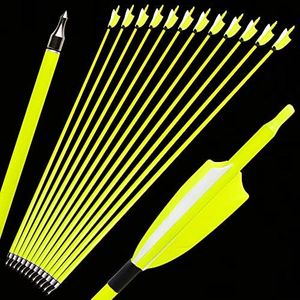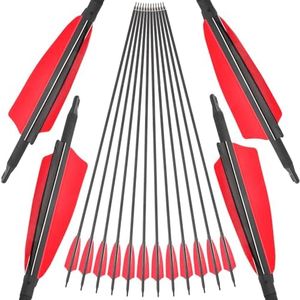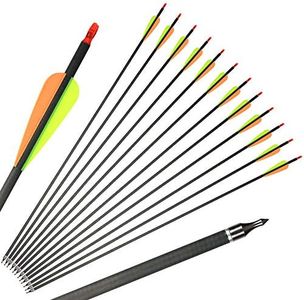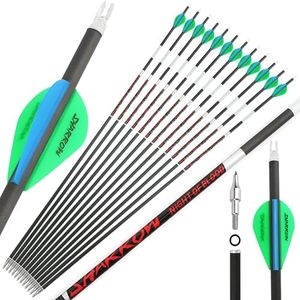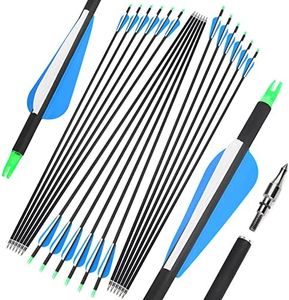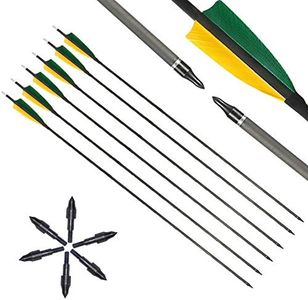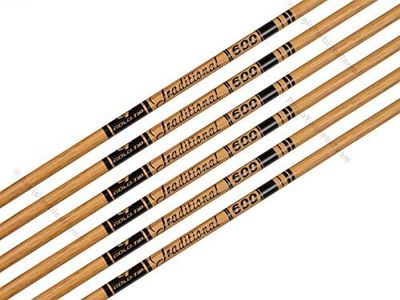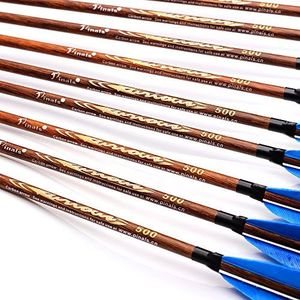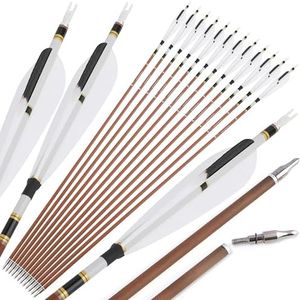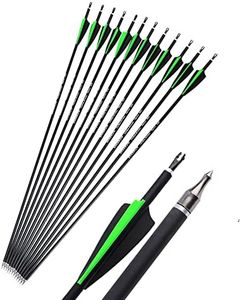We Use CookiesWe use cookies to enhance the security, performance,
functionality and for analytical and promotional activities. By continuing to browse this site you
are agreeing to our privacy policy
10 Best Carbon Arrows
From leading brands and best sellers available on the web.Buying Guide for the Best Carbon Arrows
Choosing the right carbon arrows is essential for anyone interested in archery, whether for target practice, hunting, or competitive shooting. The right arrow will improve your accuracy, ensure safety, and match well with your bow. Before you buy, it's important to know what makes arrows different from each other so you can select ones that fit both your shooting style and your equipment.Spine (Arrow Stiffness)The spine of a carbon arrow refers to how much it flexes when a force is applied. This is crucial because the arrow must bend and recover properly when shot from your bow, ensuring it flies straight. Arrows with a lower spine number are stiffer, and those with a higher number are more flexible. If you have a high poundage bow, you'll need stiffer arrows (lower spine value), while a lower-poundage bow generally works with more flexible arrows (higher spine value). To find the right arrow spine, match it with your bow's draw weight and your typical arrow length. Most archery guides have charts to help you choose the correct spine based on these factors.
Arrow LengthArrow length is simply the distance from the nock (where it attaches to the string) to the end of the shaft, not including the tip. The right length is important for safety and performance; arrows that are too short can fall off the rest and be unsafe, while very long arrows may not fly as efficiently. For most shooters, the correct length is about 1 to 2 inches longer than your draw length. You can check this at an archery shop or measure at home, ensuring your arrows always extend a bit past the front of the bow at full draw.
Arrow Weight (GPI - Grains Per Inch)Arrow weight, often measured as grains per inch (GPI), affects how fast and hard the arrow hits. Lighter arrows (lower GPI) fly faster and flatter, which many target shooters like. Heavier arrows (higher GPI) hit harder and are better for hunting, as they penetrate targets more deeply. To choose the right arrow weight, think about your purpose: target archers usually prefer lighter arrows, while hunters benefit from heavier arrows that deliver better impact on game.
Straightness ToleranceStraightness tolerance is a measure of how straight the arrow shaft is, typically given in thousandths of an inch. Straighter arrows fly more predictably and accurately. Arrows intended for competition or hunting often have tighter (smaller) straightness tolerances, making them more consistent. If you’re a casual shooter, a standard straightness is usually fine, but for serious accuracy, consider arrows with a tighter straightness tolerance.
FletchingFletching refers to the vanes or feathers at the back of the arrow, which stabilize its flight. Fletchings come in different shapes and sizes: longer or larger ones provide more stability, which is good for hunting or shooting broadheads, while smaller ones reduce drag and work well for target shooting. Choose fletching based on your typical use—larger for hunting or windy conditions, smaller for speed and target accuracy.
Nock TypeThe nock is the small piece that attaches the arrow to the bowstring. Some arrows have glued-in nocks, while others use replaceable or adjustable nocks. Using the right size nock for your string is important for consistency and safety. If you change bowstrings or styles, you may want arrows that let you easily swap nocks, but for most consistent use, fixed nocks work well.
Insert and Point CompatibilityThe insert is the part inside the arrow's front end that accepts the arrow tip (point or broadhead). Making sure the insert type fits the point you want to use is essential, especially if you plan on swapping between target tips and hunting broadheads. For easy customization, choose arrows with standard insert sizes compatible with widely available tips, or select those best matched for your specific needs.
